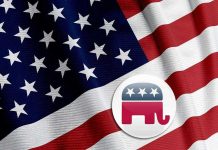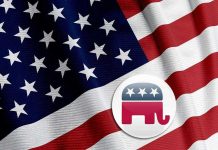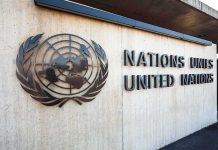
Federal agents stormed warehouses and storefronts across America, seizing millions of illicit Chinese vapes and igniting a battle that now reaches from high school hallways to the upper echelons of international trade and organized crime.
Story Snapshot
- Multi-agency raids net millions of illegal vapes linked to Chinese manufacturers and criminal networks
- Trump administration drives bipartisan action and coordination across federal, state, and local law enforcement
- Seizures disrupt youth-targeted marketing and supply chains, lowering teen vaping rates significantly
- Industry groups warn of economic fallout and the risk of a growing black market
Federal Crackdown Targets China’s Vape Pipeline and Criminal Networks
Chicago warehouses and Florida storefronts became ground zero as federal agents, acting on months of intelligence, executed sweeping raids that seized nearly five million illegal vaping devices. These products, overwhelmingly manufactured in China, had slipped through regulatory cracks, fueled by slick marketing designed for American youth and distributed via networks with ties to smuggling, money laundering, and organized crime. Law enforcement officials, from the FDA to the US Marshals Service, coordinated a response not seen since the height of the war on drugs, describing the situation as an “emerging threat” requiring an “all-of-government” approach.
Attorney General Pam Bondi and Health and Human Services Secretary Robert F. Kennedy Jr. took to the podium, vowing to “stop illegal Chinese vapes from poisoning our children.” Their statements echoed bipartisan support found among state attorneys general, all urging Congress and the White House for more aggressive intervention. The message was clear: American youth and public health were under direct assault, and the flow of illicit Chinese vapes would be stemmed by any means necessary.
Regulatory Gaps, Industry Tensions, and Economic Backlash
The vaping landscape in the US changed dramatically after the FDA’s 2020 ban on flavored cartridges. While the intent was to curb surging teen vaping rates, enforcement lagged, and Chinese manufacturers quickly flooded the market with unregulated—and often mislabeled—devices. Criminal networks exploited weak oversight, moving product through convoluted supply chains and using nondescript storefronts as fronts for distribution. Industry groups like the Vapor Technology Association pushed back, warning that aggressive enforcement would destroy small businesses, cost jobs, and drive legitimate consumers into an unregulated black market.
Trade show organizers postponed events, retailers shuttered stores, and legal distributors scrambled to comply as law enforcement intensified scrutiny at ports and borders. The economic stakes were enormous: billions in seized inventory, lost tax revenue, and the looming specter of widespread bankruptcies among small retailers and distributors. The industry’s call for regulatory clarity grew louder, with some stakeholders demanding a balanced approach that protected public health without sacrificing adult smokers’ access to harm-reduction alternatives.
Bipartisan Political Momentum and Public Health Outcomes
Bipartisan coalitions of state attorneys general pressed for stronger federal action, framing the crackdown as both a public health necessity and a matter of national security. Law enforcement officials emphasized links between illicit vapes and broader criminal enterprises—a narrative that resonated in Congress and with the public. Meanwhile, federal data revealed a silver lining: youth vaping rates fell to their lowest levels in a decade, a direct result of supply chain disruptions and reduced access to flavored products.
Despite these gains, critics warned of unintended consequences. Some public health experts and industry representatives cautioned that overly aggressive enforcement could fuel a black market, making it harder to monitor or regulate what young people consumed. The debate exposed a rift in American values—balancing the imperative to protect children with the rights of adults to make informed choices and for legitimate businesses to operate without fear of capricious enforcement.
Uncertain Future: Market Shifts, Legal Battles, and Policy Debates
The immediate impact of the crackdown was unmistakable: millions of illegal vapes off the streets, disrupted criminal networks, and a chastened industry facing tighter scrutiny. Yet the long-term picture remains less certain. Some analysts expect market consolidation, with only the most compliant manufacturers and distributors surviving. Others predict a surge in black market activity, as demand persists and Chinese manufacturers seek new ways to evade detection.
Advocates on both sides dig in, shaping a policy fight that could redefine not only vaping, but also America’s approach to regulating consumer products in an era of globalized commerce and digital marketing. The stakes—public health, economic vitality, and the rule of law—are anything but trivial, and the outcome will ripple far beyond the vape shops and warehouses.
Sources:
WFTV/AP: Federal agents seize hundreds of thousands of illegal vapes in nationwide raids
ABC News: Inside the crackdown on illicit vapes, state AGs’ letter, law enforcement actions
USHBC: Commentary on US-China trade and illicit vapes









